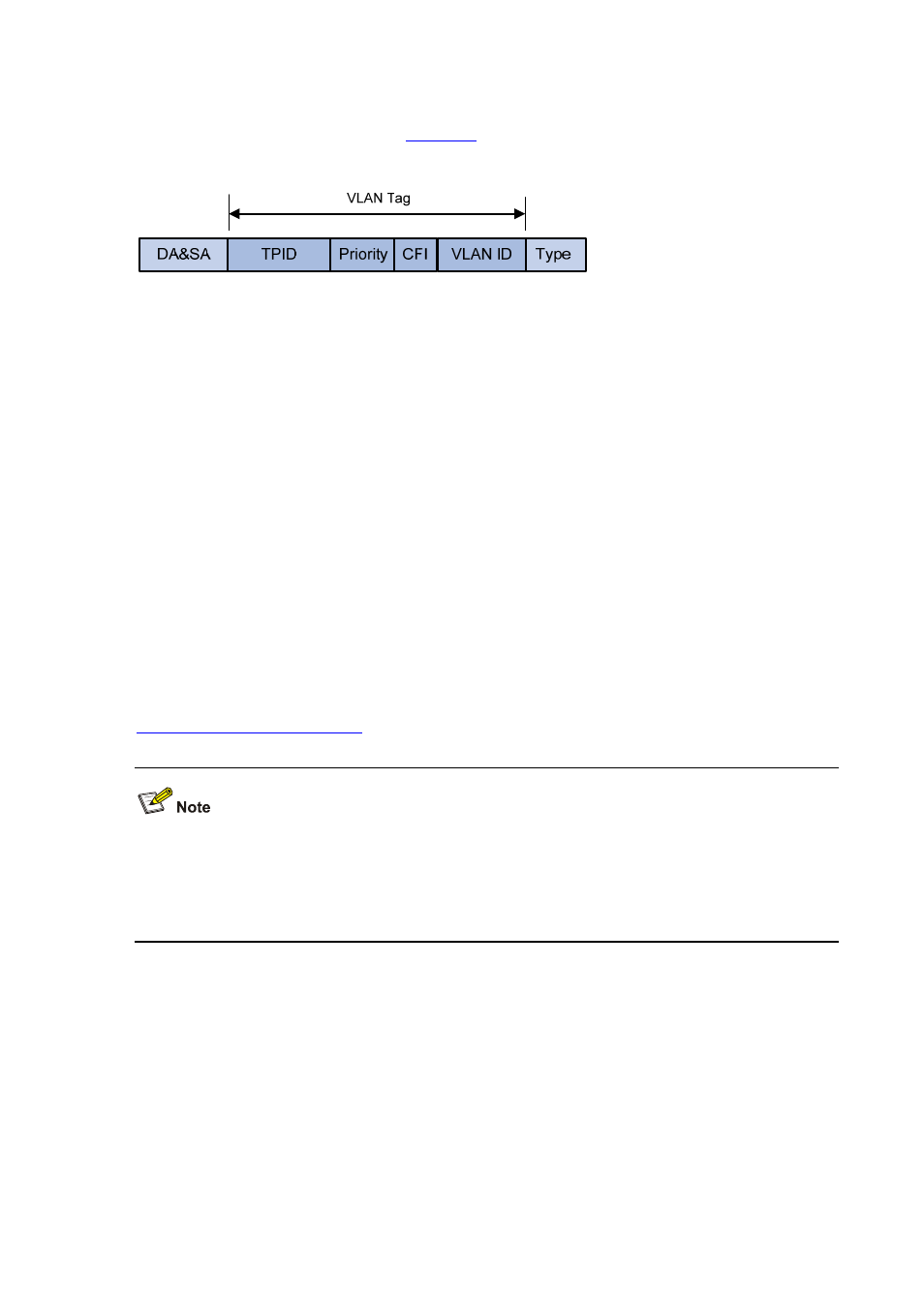Vlan classification – H3C Technologies H3C WX6000 Series Access Controllers User Manual
Page 58

7-3
IEEE802.1Q defines a four-byte VLAN Tag between the DA&SA field and the Type field to carry
VLAN-related information, as shown in
Figure 7-3
The position and the format of the VLAN Tag
The VLAN Tag comprises four fields: the tag protocol identifier (TPID) field, the Priority field, the
canonical format indicator (CFI) field, and the VLAN ID field.
z
The TPID field, 16 bits in length and with a value of 0x8100, indicates that a packet carries a VLAN
tag with it.
z
The Priority field, three bits in length, indicates the 802.1p priority of a packet. For information about
packet priority, refer to the QoS in H3C WX6103 Access Controller Switch Interface Board
Configuration Guide
.
z
The CFI field, one bit in length, specifies whether or not the MAC addresses are encapsulated in
standard format when packets are transmitted across different medium. With the field set to 0,
MAC addresses are encapsulated in standard format; with the field set to 1, MAC addresses are
encapsulated in non-standard format. The filed is 0 by default.
z
The VLAN ID field, 12 bits in length and with its value ranging from 0 to 4095, identifies the ID of the
VLAN a packet belongs to. As VLAN IDs of 0 and 4095 are reserved by the protocol, the value of
this field actually ranges from 1 to 4094.
A network device determines the VLAN to which a packet belongs to by the VLAN ID field the packet
carries. The VLAN Tag determines the way a packet is processed. For more information, refer to section
Introduction to Port-Based VLAN
.
The frame format mentioned here is that of Ethernet II. Besides Ethernet II encapsulation, other types of
encapsulation, including 802.2 LLC, 802.2 SNAP, and 802.3 raw are also supported by Ethernet. The
VLAN tag fields are also added to packets adopting these encapsulation formats for VLAN
identification.
VLAN Classification
Based on how VLANs are established, VLANs fall into different categories. The following types are the
most commonly used:
z
Port-based
z
MAC address-based
z
Protocol-based
z
IP-subnet-based
z
Policy-based
